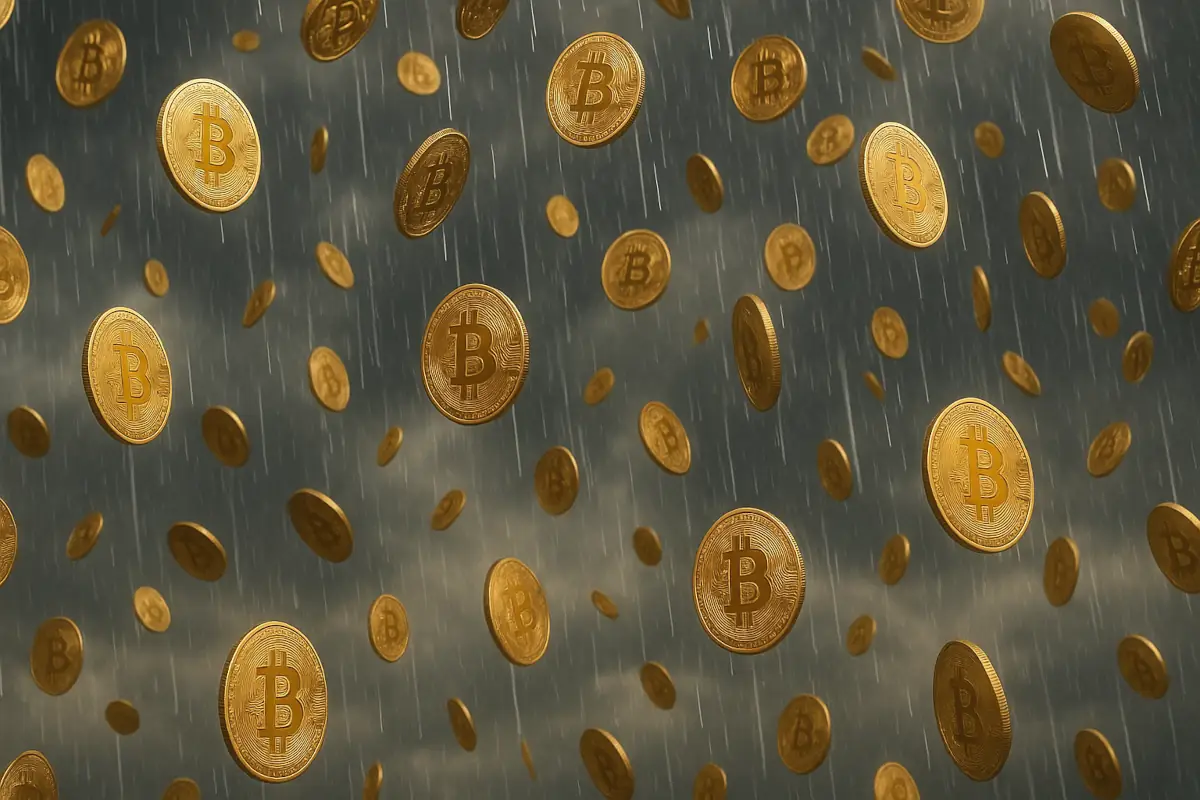Bitcoin has a fixed maximum supply of 21 million coins, a limit hard-coded into its protocol to prevent inflation. But while that cap is often cited as a key reason for Bitcoin’s scarcity, the real number of Bitcoin actually in circulation is lower – possibly much lower – due to permanently lost coins.
Estimates vary, but it’s widely accepted that several million Bitcoins are unrecoverable. These coins are still technically on the blockchain but are out of reach forever due to forgotten passwords, discarded wallets, death without access instructions, or other forms of loss.
Table of Contents
How Much Bitcoin Is Lost?
Blockchain analysis firms like Chainalysis estimate that around 3.7 million Bitcoin may be lost permanently. Other estimates go as high as 4 to 5 million. Considering the maximum supply is capped at 21 million, this means that somewhere between 17.6% and 23.8% of all Bitcoin may be gone for good.
Bitcoin self-custody losses surpass exchange losses, according to recent data. Since inception, 1.6 million bitcoins have been lost through self-custody mismanagement, compared to 1.2 million lost from exchange breaches. Major exchange losses occurred in 2011, 2013, and 2014.
Satoshi Nakamoto, Bitcoin’s pseudonymous creator, is believed to control wallets holding about 1 million Bitcoin mined in the early days of the network. These coins have never been moved and many assume they are either deliberately untouched or lost. Whether those coins should be counted as lost is debated, but they remain inactive and are effectively removed from circulation until proven otherwise.
Read also: Satoshi Nakamoto’s Identity? HBO Documentary Raises Doubts
Main Reasons Bitcoin Is Lost
1. Lost Private Keys
The most common reason Bitcoin becomes inaccessible is through the loss of private keys. Bitcoin ownership is controlled by a cryptographic key. If the owner loses the private key, access to the coins is gone permanently. Unlike traditional banking, there’s no central authority or password reset mechanism.
People who stored their coins in wallets on old hard drives or USB sticks have lost access due to hardware failure, theft, or simple misplacement. Many early Bitcoin users didn’t treat their coins with the same care as they would today, not realizing the value they’d eventually reach.
Read also: What Are the Best Ways to Store Your Seed Phrases?
2. Forgotten Wallet Passwords
Wallet encryption adds an extra layer of security by requiring a password to access the private key. Losing that password can be just as final as losing the key itself. Stories have emerged of users with millions of dollars in Bitcoin locked in wallets they can’t access because they forgot their password and only have a limited number of attempts.
A well-known case is that of Stefan Thomas, who has only two guesses left to unlock a wallet containing over 7,000 BTC. If he fails, the coins will remain unreachable.
3. Thrown-Away Hardware
There are multiple high-profile cases of people accidentally throwing away hard drives containing Bitcoin wallets. One of the most famous is James Howells from the UK, who mistakenly discarded a hard drive in 2013 containing a wallet with 8,000 BTC. He has spent years trying to get permission to dig through a landfill in hopes of recovering it – so far, without success.
4. Death Without Passing On Access
In some cases, people have died without sharing the private keys or seed phrases to their wallets. Without proper inheritance planning, these coins are effectively removed from circulation. This is becoming a bigger issue as early adopters age or pass unexpectedly. Unlike traditional bank accounts, Bitcoin cannot be recovered with a death certificate or legal documents.
5. Early Mining and “Dust” Wallets
In Bitcoin’s early days, mining was easy and coins were often treated casually. Many of these early wallets contain small amounts of Bitcoin – known as “dust” – that are no longer accessible or were never secured properly. A large number of these wallets haven’t shown any movement in over a decade and are considered lost.
Some wallets may hold only a few cents worth of Bitcoin, but over time, those amounts have become significant. When the cost of recovery outweighs the value, those coins effectively leave the supply.
6. Burn Addresses
Burning Bitcoin involves sending it to an address with no known private key – a public address from which coins cannot be retrieved. Some were used intentionally to prove a point or remove coins from circulation. While this is relatively rare compared to accidental loss, it contributes to the overall reduction in circulating supply.
A common burn address is 1BitcoinEaterAddressDontSendf59kuE, which has received thousands of BTC over time. These transactions are verifiable on the blockchain and are permanent.
Why This Matters
The lost supply impacts Bitcoin’s real scarcity. While the protocol enforces a 21 million coin cap, the number of coins that will ever be accessible is likely closer to 17-18 million, depending on which estimate is used. This makes the remaining Bitcoin more scarce than it might appear at first glance.
Lost coins also influence investor behavior. With fewer coins potentially available, holders may be less willing to sell, tightening supply further. This supports Bitcoin’s narrative as “digital gold,” where scarcity drives long-term value.
On a technical level, Bitcoin continues to function the same way regardless of how many coins are lost. There’s no mechanism in the protocol to remove lost coins or reintroduce them. They remain on the blockchain, visible and verifiable, but permanently frozen.
In economic terms, it’s similar to a deflationary adjustment. Lost coins reduce effective supply, making the remaining coins more valuable per unit if demand remains constant or grows.
Read also: What Happens When All Bitcoins Are Mined?
Final Thoughts
Bitcoin’s fixed supply is one of its key features, but the actual usable supply is lower due to lost coins. Whether from forgotten keys, accidental loss, or death, these coins are functionally out of circulation.
As the network matures and security practices improve, the rate of loss is expected to slow, but the existing gap between theoretical and actual supply will remain. This adds another layer to Bitcoin’s scarcity story – one that isn’t controlled by software but by human error and time.




